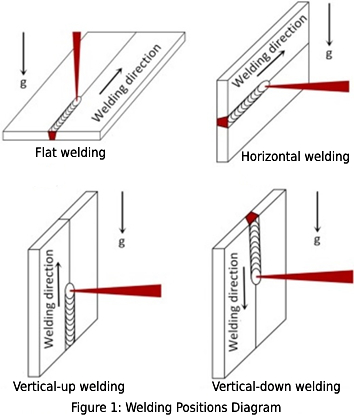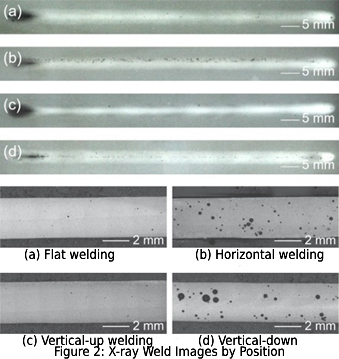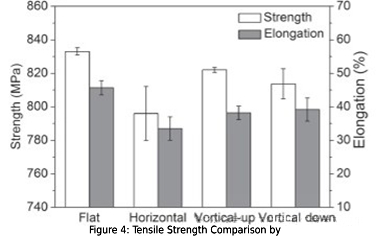Effect of Different Welding Positions on Laser Weld Quality
Jul 31, 2025Laser welding is a key technology in modern manufacturing, and weld quality is influenced by a variety of factors, among which welding position is a critical variable. Different welding positions result in significant differences in molten pool flow, heat conduction, and solidification behavior, which in turn affect weld formation, porosity defects, and mechanical properties. Based on the welding position, common types include flat welding, horizontal welding, vertical-up welding, and vertical-down welding. Figure 1 illustrates different welding positions.

Impact of Welding Position on Weld Quality:
Welding positions affect the stress distribution during welding, leading to differences in weld morphology. In flat welding, the molten pool exhibits good symmetry, and the weld is uniformly shaped and aesthetically pleasing. Due to evenly distributed gravitational force, penetration remains stable, resulting in optimal mechanical properties and welding stability. In horizontal welding, gravity causes a slight displacement of the molten pool, which affects stability compared to flat welding. In vertical-up welding, the welding direction is opposite to gravity, causing the molten metal behind the keyhole to move downward. Excessive heat input may cause burn-through, and molten pool fluctuation is greater, leading to lower stability. In vertical-down welding, the molten metal also moves downward due to gravity, but in this case, gravity aligns with the pool's movement direction, allowing smoother flow and better welding stability.

Figure 2 shows X-ray images of welds in different positions. Porosity is lower in flat and vertical-up welding, while higher in horizontal and vertical-down welding.

Figure 3 illustrates the movement of gas porosity under different welding positions. In flat welding, bubbles formed in the molten pool float upward under buoyancy and melt flow, and most escape before solidification, resulting in low porosity. In horizontal welding, the molten pool surface contacts unmelted base metal, hindering bubble escape, leading to higher porosity.
In vertical-up welding, bubbles respond to buoyancy and rise through the molten pool. Some gas escapes through the keyhole and pool before solidification, resulting in relatively low porosity. In vertical-down welding, the upper edge of the molten pool is restricted by solidified metal rather than a free space, making it difficult for gas to escape. As a result, porosity is relatively high.

Figure 4 compares the tensile properties of welds in different positions. Clear differences are observed: flat and vertical-up welds show significantly higher tensile strength than horizontal and vertical-down welds. Flat welds also exhibit the highest elongation, while horizontal welds have the lowest.

Figure 5 presents the fracture morphology of tensile specimens. No pores were observed on the fracture surfaces of flat and vertical-up welds, while numerous pores appeared in the horizontal and vertical-down specimens. High porosity reduces the mechanical properties of laser welds by decreasing the load-bearing area and concentrating stress, resulting in poorer weld quality in horizontal and vertical-down welding.
Different welding positions are suited for different applications. Flat welding is widely used in automotive body components, 3C precision parts, aerospace thin-walled structures, and home appliance enclosures. Horizontal welding is common in circumferential welding of oil and gas pipelines and large storage tanks in pressure vessels. Vertical-up welding is often used for pipe riser joints and high-rise structural welds in construction machinery. Vertical-down welding is mainly applied in ship bottom structures and underground pipeline installations.
Conclusion
Welding position has a significant impact on laser weld quality. Flat welding generally yields the best quality, while horizontal welding is the least stable. In practical applications, flat welding should be prioritized. When vertical welding is required, vertical-up is preferable, with appropriate process adjustments to reduce gravity effects and improve quality. With the development of intelligent welding technologies, welding procedures for different positions will be optimized, weld quality stability will improve, and the performance gap among different positions will gradually narrow.